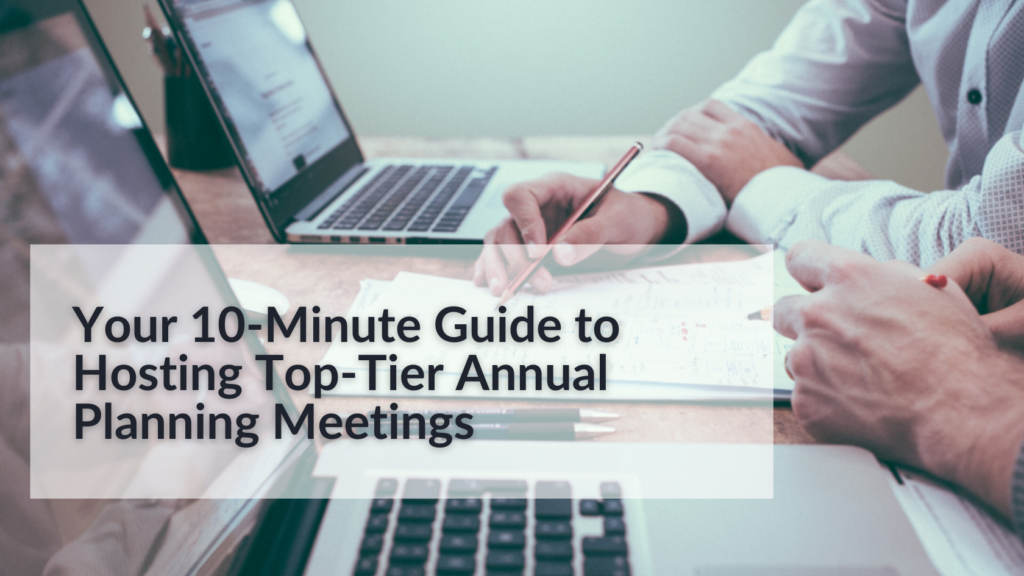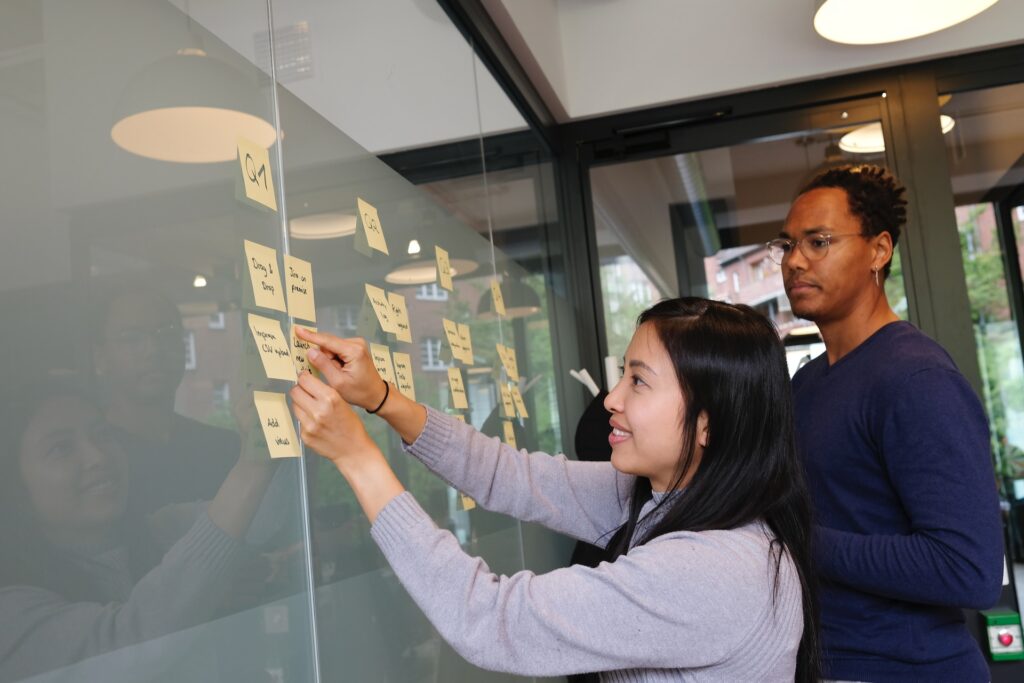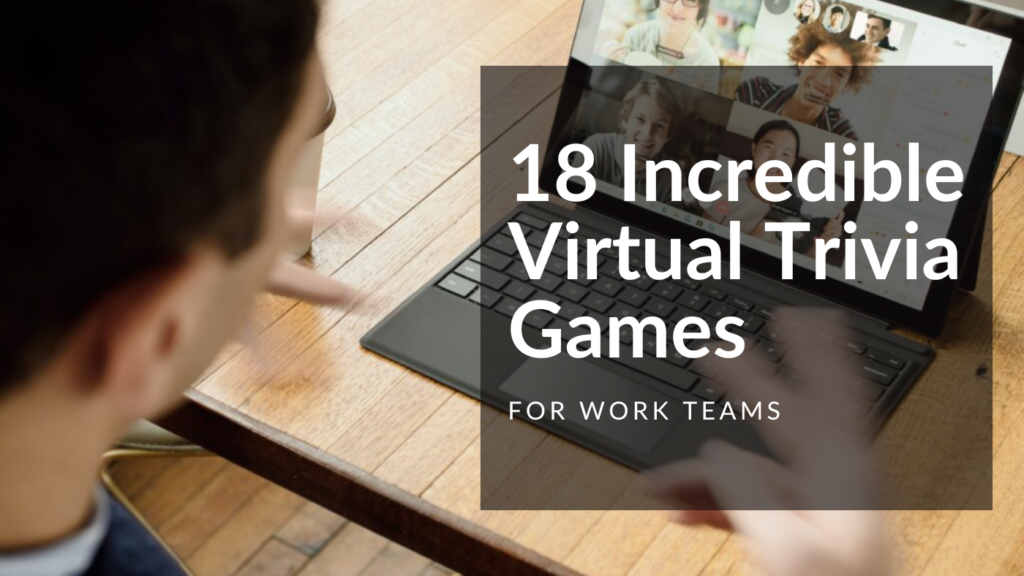Your 10-Minute Guide to Hosting Top-Tier Annual Planning Meetings

For organizations of all sizes, annual planning meetings are essential for setting your company up for success in the year ahead. But facilitating these events can be daunting. Our comprehensive guide is here to help.
As the new year approaches, businesses of all sizes face the critical task of setting the stage for the months ahead.
Central to this process is the annual planning meeting, an event that can shape the trajectory of an organization’s forthcoming success.
These meetings are not just about reflecting on past achievements and setbacks. They’re also about aligning the team with a unified vision, setting concrete, actionable goals, and getting your team inspired.
This guide is tailored for businesses keen on hosting a successful annual planning meeting and provides a roadmap you can follow, from the initial preparations to the follow-up strategies.
- Understanding the Purpose of Annual Planning Meetings
- Laying the Groundwork for Your Next Annual Planning Meeting
- 1. Determining Timing
- 2. Picking Your Venue
- 3. Defining Your Goals for the Coming Year
- 4. Send Out Invitations and Confirm Your Team’s Attendance
- Ensuring You Leave No Logistical Stone Unturned
- Creating an Effective Agenda for Your Annual Planning Meeting
- Taking Steps to Ensure Your Annual Planning Meeting Attendees Are Engaged
- Documenting Your Annual Planning Meeting and Conducting Follow-Up
Understanding the Purpose of Annual Planning Meetings

Before you start mapping out your annual planning meeting, it’s always a good idea to go back to the basics and give yourself a refresher on what exactly annual planning meetings are meant to do and what they can help your organization to achieve.
What Are Annual Planning Meetings?
On a fundamental level, annual planning meetings are strategic sessions where your company’s leadership and key team members come together to review the previous year’s performance and chart a course for the future.
These meetings are an opportunity to celebrate successes, learn from failures, and realign with the company’s long-term vision.
Beyond that, though, they’re also an opportunity to generate excitement and enthusiasm about what the coming year holds and to boost employee engagement.
Mapping Objectives and Outcomes for Your Annual Planning Meeting
The primary aims of annual planning meetings are to:
- Establish clear organizational goals
- Identify key performance indicators (KPIs)
- Foster a sense of unity and purpose within your team.
As a generality, there are a few things people will expect to take away from your company’s annual planning meeting, including:
- A detailed roadmap for the upcoming year
- A deepened understanding of the company’s strategic position
- A renewed sense of motivation, engagement, and collaboration among team members
With these key points in mind, you can head into the preparation phase for your company’s annual planning meeting.
Laying the Groundwork for Your Next Annual Planning Meeting

When you start mapping out your annual planning meeting, there are four fundamental considerations you need to make.
1. Determining Timing
The start of the year is ideal for your annual planning meetings as it provides a fresh perspective and sets the tone for the months ahead.
So, many organizations opt for a date in January.
With that being said, though, it’s also important to reverse-engineer your projected event date to ensure you have sufficient time to do that actual planning portion.
This can take months, so plan accordingly.
2. Picking Your Venue
In the modern working world, it’s important to plan for diverse meeting formats to account for the multitude of ways in which your organization might operate, and this should be reflected in your choice of venue.
Venue Planning for In-Person Annual Planning Meetings
If you’re able to bring your entire team together in person, here’s what you should consider from a venue perspective:
- Location: For in-person meetings, the location should be central and easily accessible to all participants
- Facilities: Look for venues with comfortable seating, ample space, and good acoustics. Ensure there are facilities for breaks and informal discussions
- Technology: Even in-person meetings benefit from technology. Ensure the availability of projectors, screens, and sound systems for presentations
Venue Planning for Hybrid Annual Planning Meetings
For teams that operate on a hybrid model, with some mix of employees working in-office and remotely, you’ll want to account for the following with your annual planning meeting venue:
- Combining Physical and Digital Spaces: Hybrid meetings require a venue that accommodates in-person attendees while also being equipped for virtual participation
- Tech Setup: Ensure a robust internet connection and equipment like cameras and microphones that can capture the room’s discussions for remote participants
- Considerations for Remote Participants: It’s essential to provide a seamless experience for remote attendees. This might include dedicated time for remote participation and ensuring they are equally involved in all discussions
Venue Planning Fully Remote Annual Planning Meetings
Finally, your organization may operate entirely remotely, meaning you’ll need to consider things like:
- Digital Platform Selection: Choose a reliable and user-friendly digital meeting platform that supports video conferencing, screen sharing, and real-time collaboration, complemented by an online meeting scheduling software for efficient planning.
- Virtual Venue: While you don’t need a physical space, consider the virtual environment. This could involve using virtual breakout rooms for group discussions and interactive tools for brainstorming.
- Accessibility: Ensure that all participants have access to the necessary software and hardware to join the meeting without technical difficulties.
3. Defining Your Goals for the Coming Year

The foundation of a successful annual planning meeting lies in setting clear, well-defined goals. These goals serve as the roadmap for the organization’s activities throughout the year.
The most attainable goals are often rooted in the SMART criteria:
- Specific: Goals need to be clear and specific to provide direction. For example, instead of setting a goal to ‘increase sales,’ a more specific goal would be ‘increase sales by 15% in the next fiscal year’
- Measurable: Establish concrete criteria for measuring progress. This could involve quantifiable targets or specific milestones
- Achievable: The goals should be realistic and attainable to be truly effective. This means understanding the resources available and the limits of what the organization can realistically achieve
- Relevant: Ensure that the goals are relevant to the direction in which the organization aims to head. They should align with other organizational objectives and the overall mission
- Time-bound: Every goal should have a deadline, creating a sense of urgency and prompting action
Your goals should not only be SMART but also aligned with the broader mission and vision of your organization. This alignment ensures that your organization moves cohesively towards its long-term objectives, reinforcing the company’s core values and purpose.
It’s also incredibly wise to get key stakeholders involved in the goal-setting process for several reasons, including that it helps attain:
- Diverse Perspectives: Stakeholders from different departments or areas of the business can provide diverse perspectives, leading to more comprehensive and inclusive goal setting. For example, involving representatives from sales, marketing, finance, and operations ensures that the goals consider various aspects of the business.
- Buy-in and Commitment: When stakeholders are involved in the goal-setting process, they are more likely to commit to and support the goals. This buy-in is crucial for the effective execution of the plans.
- Identifying Challenges and Opportunities: Stakeholders can help identify potential challenges and opportunities that might impact goal achievement. Their insights can lead to more realistic and achievable goal setting.
- Building a Collaborative Culture: This inclusive approach fosters a culture of collaboration and open communication within the organization. It encourages a sense of ownership among team members and leaders alike.
- Continuous Feedback Loop: Encourage stakeholders to provide ongoing feedback, not just during the annual meeting but throughout the year. This continuous loop allows for adjustments and refinements to goals as market conditions or internal circumstances change.
4. Send Out Invitations and Confirm Your Team’s Attendance
Once you’ve got all the details of your annual planning meeting mapped out, remember to send out invitations to all attendees and schedule follow-up confirmation emails in the weeks that follow.
Ensuring You Leave No Logistical Stone Unturned

Nothing will derail your annual planning meeting faster than logistical issues on the day of your event. So, it’s essential to consider a few key factors well in advance of your meeting.
Technical Needs
In today’s digital age, ensuring seamless technological support is essential, especially if you’re accommodating remote participants. This includes reliable video conferencing tools that have built-in video capture software, high-quality audio systems, and stable internet connectivity.
This can also extend to projectors, speakers, microphones, and any other technical needs you may have for in-person or hybrid annual planning meetings.
Accommodations and Travel
For meetings that involve participants traveling from different locations, logistics become key. Ensuring comfortable accommodations and smooth travel arrangements demonstrates respect for the participants’ time and commitment, setting a positive tone for the meeting.
Accommodating Diverse Participation Formats
Depending on whether your meeting will be fully in-person, hybrid, or remote, there are a few additional things you’ll want to keep in mind:
- In-Person Logistics: This includes managing travel, accommodation, catering, and on-site technology support.
- Hybrid Logistics: Here, the focus is on seamlessly blending the in-person and remote experiences. This includes ensuring that the technology used is accessible and user-friendly for remote participants.
- Remote Logistics: For fully remote teams, logistics may involve ensuring that participants have access to a stable internet connection, sending out digital toolkits or guides in advance, and perhaps providing allowances for home office setups or catering.
Creating an Effective Agenda for Your Annual Planning Meeting

A meeting agenda is essential for annual planning meetings for several reasons, each contributing to the overall effectiveness and productivity of the meeting:
- Structure and Focus: An agenda provides a structured outline for the meeting, ensuring that all critical topics are covered. It helps keep the meeting focused on the key objectives, preventing sidetracking and ensuring that time is used efficiently.
- Time Management: With a pre-defined agenda, it’s easier to allocate specific time slots to different topics. This helps in managing the meeting time effectively, ensuring that sufficient time is given to each important issue without overrunning the allotted overall meeting time.
- Preparation and Participation: An agenda communicated in advance allows participants to prepare for the meeting. They can gather necessary information, formulate thoughts and questions, and come ready to contribute meaningfully to the discussions.
- Prioritization of Topics: An agenda helps in prioritizing the topics that need to be discussed. This prioritization ensures that the most critical issues are addressed first, making sure that key strategic items get the attention they need.
- Clarity of Purpose: A clear agenda sets expectations for the meeting’s purpose and outcomes. Participants understand the goals of the meeting and the role they are expected to play, which can lead to more engaged and productive discussions.
- Record Keeping and Accountability: The agenda serves as a record of what was planned to be discussed. Post-meeting, it can be used to check if all items were covered and to hold participants accountable for any follow-ups or action items that were agreed upon.
- Inclusivity: A well-thought-out agenda can ensure that all relevant voices are heard. By allocating time to different topics and participants, it ensures that the meeting is not dominated by a few voices but includes contributions from a diverse group.
- Efficient Decision-Making: When everyone is prepared and topics are clearly defined, decision-making becomes more efficient. The agenda facilitates focused discussions and helps guide the group towards concrete decisions and action plans.
- Follow-Up and Continuity: Post-meeting, the agenda can be used as a basis for the meeting minutes and as a checklist for follow-up actions. This helps in maintaining continuity from one meeting to the next and ensures that decisions are implemented.
- Setting the Tone: Finally, an agenda sets the professional tone for the meeting. It signals that the meeting is a serious, purposeful endeavor, and not just a casual gathering. This can influence the mindset of the participants, leading to a more constructive and formal approach to the discussions.
Developing the Agenda
Your annual planning meeting agenda should be a carefully crafted document that guides the flow of the meeting.
It needs to encompass various aspects such as a review of the previous year’s achievements and setbacks, setting goals for the upcoming year, and addressing key operational challenges.
Balancing the Agenda
When it comes to your annual planning meeting agenda, it’s essential to strike a balance between high-level strategic discussions and more practical, operational topics.
Allocate time for team building and morale-boosting activities, ensuring the agenda covers both the visionary and the tangible aspects of running the business.
Adapting the Agenda to the Meeting Format
Regardless of your annual planning meeting format—in-person, hybrid, or fully remote—your agenda should be crafted to suit the specific needs and constraints of that format.
For instance, in a remote setting, it might be beneficial to have shorter sessions with breaks in between, as digital fatigue can set in more quickly than in face-to-face meetings.
With an in-person annual planning meeting, it’s also wise to incorporate breaks. You can consider things like going through a round of icebreaker questions to get people reinvigorated between each session.
Taking Steps to Ensure Your Annual Planning Meeting Attendees Are Engaged

For your annual planning meeting to be a homerun, you need your attendees to be engaged. While it’s a romantic idea to think that people will just show up and be dialed in, this isn’t always the reality.
So, it’s important to get proactive about creating engagement.
First and foremost, consider the format of your annual planning meeting and plan engagement strategies accordingly:
- In-Person: Use traditional engagement techniques like group activities and roundtable discussions.
- Hybrid: Ensure that remote participants are not just passive viewers but active participants. This can be achieved through interactive polls, digital Q&A sessions, and ensuring that both in-person and remote attendees can contribute equally.
- Remote: Leverage the strengths of digital platforms through virtual breakout rooms, real-time collaboration tools, and interactive elements like polls and quizzes to keep the engagement levels high.
With these considerations in mind, you can start to map out what you’ll do to keep people engaged.
Interactive Sessions
It’s wise to incorporate engagement-driving elements into your annual planning meeting, such as:
- Workshops
- Breakout sessions
- Brainstorms
- Open forums for discussion
- Pre-meeting surveys to gather input and questions
- Team activities
These things can transform your meeting from a passive listening experience into an engaging and participative event. These interactive elements also encourage collaboration and creative thinking.
Collaboration Tools
Utilize modern collaboration tools to enhance participation and record ideas. This might include digital whiteboards, real-time polling, and collaborative note-taking apps, which can make the meeting more inclusive and productive.
Team Building Activities
Whether you want them to be a focal point of your annual planning meeting, quick bursts of engagement between sessions, or fast ways to get your team’s energy back up after lunch, team building activities are a great thing to incorporate into the day.
These events help with:
- Enhancing Collaboration: Team building activities help break down barriers between individuals and departments. They encourage open communication and collaboration, which are crucial for effective teamwork throughout the year.
- Building Trust: These activities foster trust among team members. Trust is a fundamental element for a productive team, as it leads to better communication, collaboration, and willingness to rely on one another.
- Boosting Morale: Engaging in team building activities can boost morale and create a more positive work environment. When employees feel happier and more connected with their colleagues, they are often more motivated and engaged in their work.
- Improving Communication: Team building exercises often require clear and effective communication to be successful. These activities provide a practical and often fun way for team members to enhance their communication skills.
- Identifying Leadership and Other Skills: Such activities can bring out latent talents and skills within the team, such as leadership, problem-solving, and creative thinking. Recognizing these skills can be beneficial for future project assignments and roles within the organization.
- Reducing Conflict: By understanding each other better through team building activities, employees can learn to work through conflicts more effectively. These activities often require participants to work collaboratively to solve problems, which can help reduce workplace tensions.
- Encouraging Creativity: Many team building activities require creative thinking, pushing team members out of their regular thought patterns. This can lead to innovative ideas and approaches, both during the activities and in professional tasks.
- Stress Relief: Team building exercises can provide a welcome break from the more serious and sometimes stressful aspects of annual planning. They offer a chance to relax, laugh, and release stress, which can improve overall well-being and productivity.
- Understanding Team Dynamics: These activities give insight into team dynamics, including how team members work together and what roles they naturally take on. This understanding can help in organizing work more effectively.
- Aligning with Organizational Goals: When aligned with the goals of the meeting, team building activities can reinforce the organization’s values and objectives, making them more memorable and impactful for employees.
- Fostering a Sense of Belonging: They help in creating a sense of belonging and community within the team. When employees feel like they are part of a team, they are more likely to be committed to their work and the organization.
Whether your team works remotely or in person, we’ve got some awesome team building activities and virtual team building activities we think you’ll like.
Virtual Friendly Feud Social

Gather your colleagues and take part in your very own virtual Family Feud-style gameshow that fuses high-energy competition with engaging social mixer activities.
Virtual Hollywood Murder Mystery

An up-and-coming actress has been found dead in her hotel room the morning after an awards show. Now, you and your remote team need to channel your inner detectives as you review the evidence, assess potential suspects, and determine the method, motive, and murderer in the crime.
Virtual Escape Room: Mummy’s Curse

In this virtual escape room experience, your team will be transported into a pyramid cursed by a restless mummy. You’ll have to work together to uncover clues and solve complex challenges to lift the ancient curse.
Virtual Jeoparty Social

Work collaboratively with your teammates as you put your collective trivia knowledge to the test in this high-energy and immersive virtual Jeopardy-style competition infused with a fun social twist.
The Virtual Do-Good Games

Team up with your colleagues to do some good in the world and give back to those in need while having a blast. The Do-Good Games is a morale-boosting virtual team building activity that transforms friendly competition into charitable donations.
Wild Goose Chase

In this scavenger hunt activity, your team can get out of the office and explore your city in a whole new way. Together, your team will need to think outside the box, bond as a group, and venture outside into the community in order to complete a series of fun and unique photo and video challenges.
Charity Bike Buildathon

Split into teams to build, decorate, and put together an advertising campaign for children’s bicycles. After each group has presented their bike, you get to donate them all to a charity of your choice!
Trivia Time Machine

Take a trip through pop culture history and transform your office into your very own game show experience – featuring a witty game show host, scoreboard, buzzer, and all!
Game Show Extravaganza

Play in a game show-style competition trivia challenges covering everything from pop culture to politics.
Corporate Castaways

Transform teammates into tribemates with this activity inspired by the “Survivor” TV show.
Documenting Your Annual Planning Meeting and Conducting Follow-Up

Effective documentation is a cornerstone of successful annual planning meetings. It ensures that the insights, decisions, and action plans that you and your team developed during the meeting are accurately captured and preserved.
During and after your annual planning meeting, you’ll want to:
- Keep Detailed Minutes: Assign a dedicated person to take detailed minutes of the meeting. These minutes should include key points of discussion, decisions made, action items, and assigned responsibilities.
- Use Digital Tools: Leverage digital tools for efficient and accessible documentation. Tools like shared cloud documents, meeting management software, or even project management apps can be used to record and distribute the minutes.
- Ensure Documentation is Accessible: Ensure that the documentation is easily accessible to all relevant team members. This can involve sharing documents via email, company intranet, or collaboration platforms.
Once you’ve done so, the follow-up process is critical to turn the plans and decisions made during the meeting into action and results.
It’s a good idea to consider the following:
- Action Plan Development: Convert the meeting decisions into a detailed action plan. This plan should outline what needs to be done, by whom, and by when. Assign clear responsibilities and deadlines for each action item.
- Regular Progress Checks: Schedule regular follow-ups to monitor the progress of the action items. This could be in the form of follow-up meetings, progress reports, or updates during regular team meetings.
- Adjustments and Revisions: Be prepared to adjust the action plan as needed. Circumstances can change, and the plan may need to be revised accordingly. Regular reviews can help identify where changes are needed.
- Accountability Mechanisms: Establish mechanisms for accountability to ensure that the action items are carried out. This might include regular reporting, check-ins with responsible team members, or integrating tasks into performance evaluations.
- Celebrating Milestones: Recognize and celebrate milestones and achievements along the way. This helps to maintain momentum and morale and reinforces the importance of the goals set during the planning meeting.
- Feedback and Learning: After the follow-up period, gather feedback about the planning process and the effectiveness of the follow-up. This feedback can be used to improve future planning meetings and follow-up processes.
- Communication: Maintain open and consistent communication throughout the follow-up process. Keeping everyone informed helps ensure alignment and keeps the team focused on the common goals.
When it comes to hosting top-tier annual planning meetings, the success of these gatherings hinges on meticulous preparation, engaging execution, and diligent follow-up.
The true measure of a successful annual planning meeting lies not just in the decisions made or the plans laid out, but in how effectively these are translated into action.
By embracing these principles, you can transform your annual planning meetings from obligatory corporate rituals into dynamic, impactful events that drive strategic success and organizational unity.
Learn how team building activities can create greater engagement at annual planning meetings.
If you’ve got questions about team building activities that can enhance your annual planning meeting, reach out to an Employee Engagement Consultant today.




Great post! Very informative and well-written. Looking forward to more content from this blog!Thank you